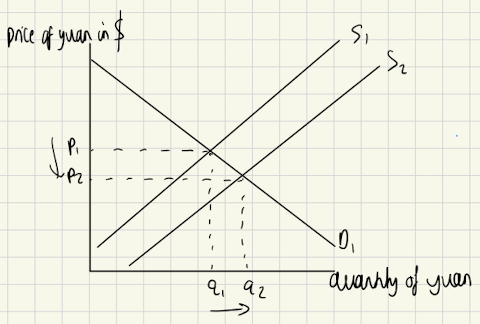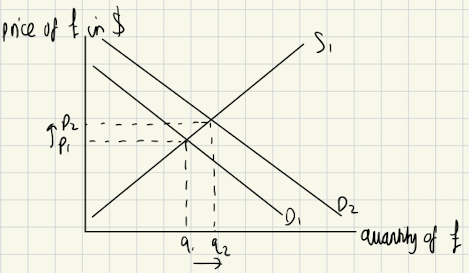Exchange rates are the price of a currency in terms of another. A fixed exchange rate is when the value of the currency is managed by the central bank who buy and sell currency reserves in order to control the value of their currency. China could use their dollars to buy more yuan, or they could use their yuan to buy more dollars.
For example, China may prefer a weak currency so that it makes their exports cheaper and therefore more attractive, to achieve high aggregate demand and high economic growth. If their currency rises, they could use their reserves in order to devalue their currency. They would sell their reserves of Chinese Yuan and buy more US dollars. The diagram shows the value of the Chinese Yuan will fall as a result of this increase in supply, which will make their exports cheaper.

A country could also use their fixed exchange rate to cause an increase in the value of their currency. This could be so that the country can import goods and services at a lower cost. They would be able to do this by using their reserves of the foreign currency in order to buy back more of their own currency. This artificially creates greater demand for their own currency, which causes the value of it to increase, as shown by the diagram below.

However, these manipulations in the value of currency require a fixed exchange rate, which is not ideal. The country's central bank has to constantly keep hold of millions of pounds worth of reserves, of their own currency, and of a foreign currency. Another downside about using a fixed exchange rate system is that there is very limited flexibility in terms of the country's interest rates. This is because any change in interest rates (for example - to control inflation) will also have a knock-on effect on the value of the currency. For example, if the central bank reduces interest rates, that would cause a fall in demand from investors (hot money flows), causing a fall in demand for the currency. This may contradict the plans to keep a high exchange rate, or would mean that the central bank has to constantly be on top of any fluctuations in demand and supply, by buying and selling their reserves. There is an added risk of government failure.